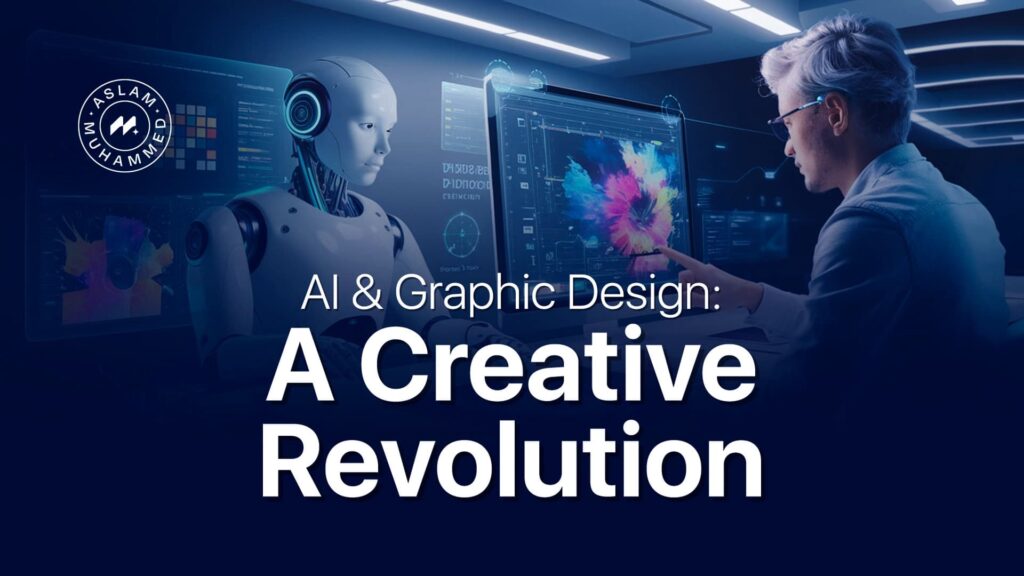
Introduction
In the ever-evolving landscape of digital technology, the crossroad of artificial intelligence (AI) and graphic design stands out as a particularly dynamic intersection. This blog post explores how AI is redefining the boundaries of creative expression, transforming conventional design practices, and laying the foundation for what may be considered a revolutionary shift in the creative industry. Through an examination of various elements ranging from the practical benefits to the challenges posed by this technological integration, we aim to provide a comprehensive understanding of this pivotal development.
How AI is Transforming Graphic Design
The infusion of AI into graphic design is altering workflow dynamics and creative processes significantly. By automating repetitive tasks like resizing images and even generating layouts, AI allows designers more time to focus on inventive tasks. AI tools like Neural Networks and Generative Adversarial Networks (GANs) are at the forefront, capable of creating original artwork and enhancing existing designs with minimal human intervention.
Consider my personal experience a few months ago: I was working on a project with tight deadlines and was amazed at how an AI tool significantly reduced my workload by auto-generating design drafts based on brief inputs. The tool’s ability to understand design concepts enabled a seamless design process that would have otherwise consumed valuable hours.
Benefits of AI in Graphic Design
The integration of AI in graphic design offers several compelling advantages:
- Efficiency and Speed: AI solutions accelerate the design process by automating mundane tasks.
- Enhanced Creativity: By providing unique design suggestions, AI can inspire novel creative directions.
- Cost-Effectiveness: Businesses can lower operational costs by reducing the need for extensive human labor.
- Data Utilization: AI can process vast amounts of data, allowing for targeted and audience-specific designs.
“AI’s true worth in design is to augment, not supplant, human creativity.”
Challenges of AI Integration
Despite its benefits, the inclusion of AI in the realm of design poses distinct challenges:
- Loss of the Human Touch: There might be an over-reliance on AI, leading to designs that could lack a personal feel.
- Technical Limitations: Early-stage AI tools may not always understand nuanced design requirements.
- Skill Gap: Designers need to acquire new skills to work alongside AI technologies effectively.
- Ethical Concerns: Issues such as data privacy and ownership of AI-generated content remain contentious.
I encountered one such challenge when relying on AI for color suggestions in a project—while functional, the outcomes often lacked the emotional depth I intended to convey.
Real-Life Applications of AI in Design
AI applications are vast and steadily increasing within the design domain:
- Adobe Sensei: Provides designers with AI features to enhance images, create layouts, and perform tedious tasks with ease.
- Canva’s AI Tools: Facilitate quick design generation for users, making high-quality design accessible to non-designers.
- DeepArt: Transforms photos into artworks by using style transfer algorithms.
These applications showcase how AI serves as an indispensable tool in the modern designer’s toolkit, enhancing capabilities beyond traditional methods.
Future of Graphic Design with AI
As AI technology continues to advance, its impact on graphic design will increasingly expand. The future might see AI taking on more sophisticated creative roles, collaborating with designers rather than working as a mere tool. Design education will likely evolve to incorporate AI literacy, ensuring that new generations of designers are well-equipped to leverage AI technology.
The potential exists for a harmonious relationship where AI becomes an extension of the creative process, allowing human designers to push the boundaries of creativity further than ever before.
Conclusion
In conclusion, AI is undeniably a game-changer in the graphic design industry, offering both immense potential and notable challenges. While its integration undoubtedly enhances efficiency and opens new creative paths, designers must navigate the hurdles that accompany this technological advancement. As this creative revolution unfolds, a balance between technological reliance and human creativity will be key, ensuring that the authenticity and emotional depth of design work remain intact.